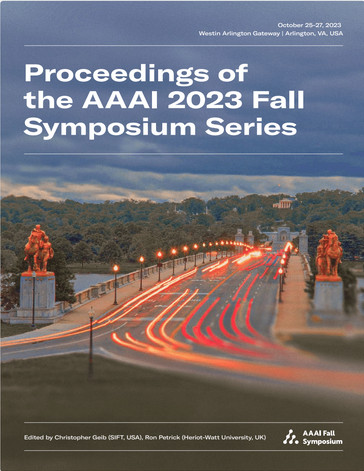Considerations for End-User Development in the Caregiving Domain
DOI:
https://doi.org/10.1609/aaaiss.v2i1.27725Keywords:
RobotAbstract
As service robots become more capable of autonomous behaviors, it becomes increasingly important to consider how people will be able to communicate with a robot about what task it should perform and how to do the task. There has been a rise in attention to end-user development (EUD), where researchers create interfaces that enable non-roboticist end users to script tasks for autonomous robots to perform. Currently, state-of-the-art interfaces are largely constrained, often through simplified domains or restrictive end-user interaction. Motivated by our past qualitative design work exploring how to integrate a care robot in an assisted living community, we discuss challenges of EUD in this complex domain. One set of challenges stems from different user-facing representations, e.g., certain tasks may lend themselves better to a rule-based trigger-action representations, whereas other tasks may be easier to specify via a sequence of actions. The other stems from considering the needs of multiple stakeholders, e.g., caregivers and residents of the facility may all create tasks for the robot, but the robot may not be able to share information about all tasks with all residents due to privacy concerns. We present scenarios that illustrate these challenges and also discuss possible solutions.Downloads
Published
2024-01-22
How to Cite
Stegner, L., Porfirio, D., Roberts, M., & Hiatt, L. M. (2024). Considerations for End-User Development in the Caregiving Domain. Proceedings of the AAAI Symposium Series, 2(1), 532-536. https://doi.org/10.1609/aaaiss.v2i1.27725
Issue
Section
Unifying Representations for Robot Application Development

